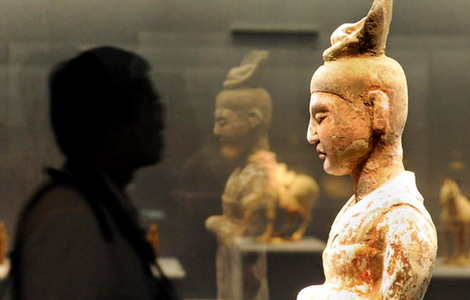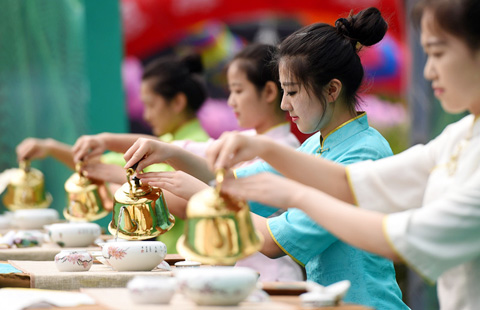Mad about saffron
Updated: 2015-04-30 08:15
By Mike Peters(China Daily)
|
||||||||
 |
|
Botanical evidence suggests saffron originated in Greece, where the earliest related species appear in this Minoan fresco of saffron gatherers that dates from 1500 BC.[Photo provided to China Daily] |
In restaurants like Sharzhad in Esfahan or Persepolis in Beijing, Iranian chefs convert their treasured saffron into jewel-like morsels of yellow rice, fragrant teas and glowing golden desserts. In the US, a group of entrepreneurial military veterans have started Rumi Spice, an online shop that supports independent saffron growers in war-torn Afghanistan. In Calgary, Canada, the Silk Road Spice Merchant has similarly embraced the spirit of the ancient traders with a website rich with information and quality spices for sale since 2008.
"Fresh saffron has a distinctive earthy smell and flavor and imparts a bright orange color to food," say co-owners Kelci Hind and Colin Leach on the website, warning that imitations like safflower petals look similar but are far cheaper and almost tasteless. "Saffron is a characteristic ingredient for a number of traditional dishes like bouillabaisse and paella, as well as many risottos. Try adding a few threads to basmati rice with Indian dishes and turn your rice a beautiful golden color.
"When adding saffron to a dish," they advise, "add it to a bit of liquid first to draw out the color, or grind to a powder if no liquid is being used. Adding saffron early in the cooking process gives more color; adding late gives more flavor."
About this series
China Daily is featuring different cuisines from countries along the Silk Road every Thursday.

 China's top 10 GDP provinces in Q1
China's top 10 GDP provinces in Q1
 Photos capture marvelous landscapes of China
Photos capture marvelous landscapes of China
 Mass exodus from Kathmandu
Mass exodus from Kathmandu
 Running on water: a nearly impossible feat
Running on water: a nearly impossible feat
 Ten photos you don't wanna miss - April 30
Ten photos you don't wanna miss - April 30
 'Comfort women' survivor attends protest of Japan PM
'Comfort women' survivor attends protest of Japan PM
 Ten photos you don't wanna miss – April 29
Ten photos you don't wanna miss – April 29
 China's rescue team searches for survivors in Nepal
China's rescue team searches for survivors in Nepal
Most Viewed
Editor's Picks

|

|

|

|

|

|
Today's Top News
Abe betrays history's conscience
Vancouver property developer identified
as Chinese fugitive: report
Freddie Gray tried to hurt himself in police van
China trainmakers seek control of Bombardier's rail unit
New rich set sights on tech, media and telecom sectors
US rapped for stance on Japan
Obama, Abe talk much about China
Japan PM protested at US Capitol, San Francisco
US Weekly

|

|







